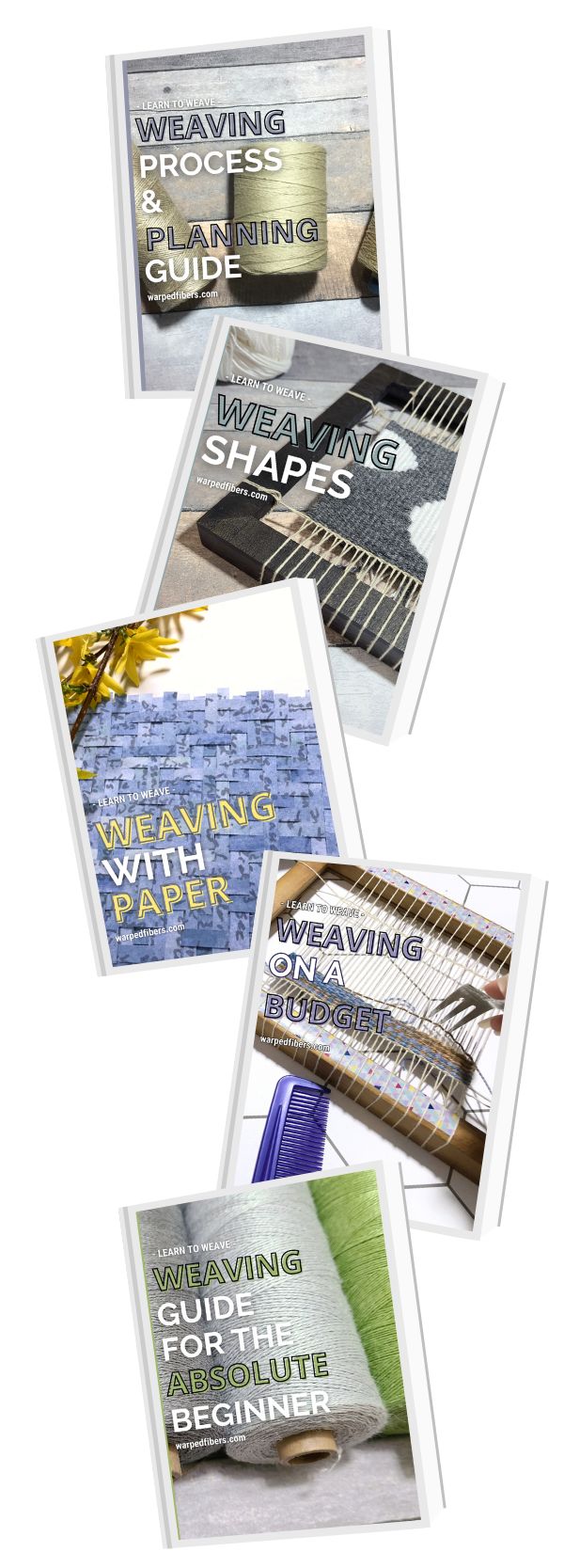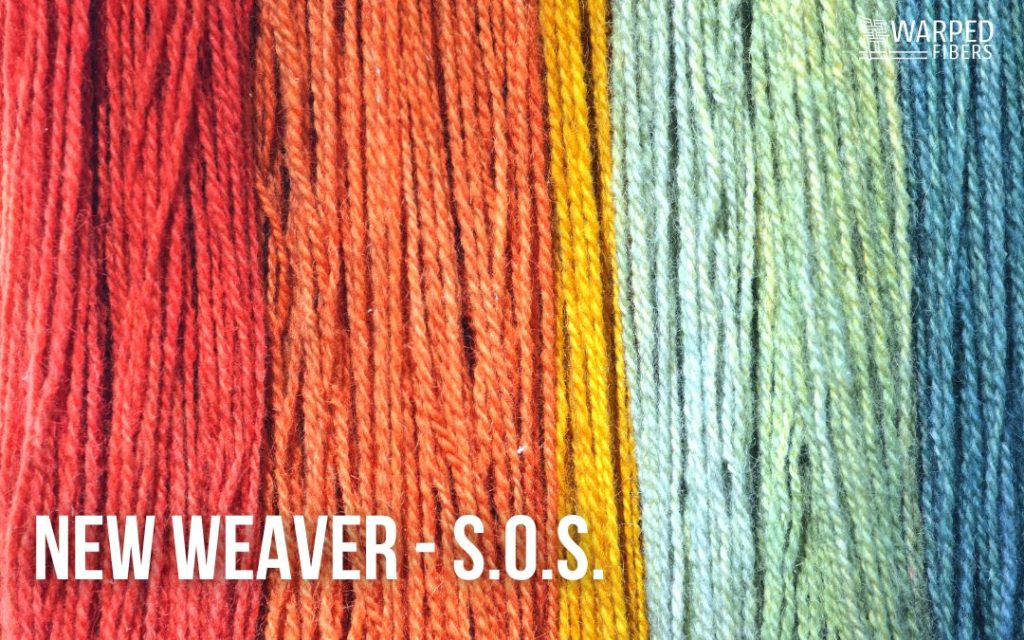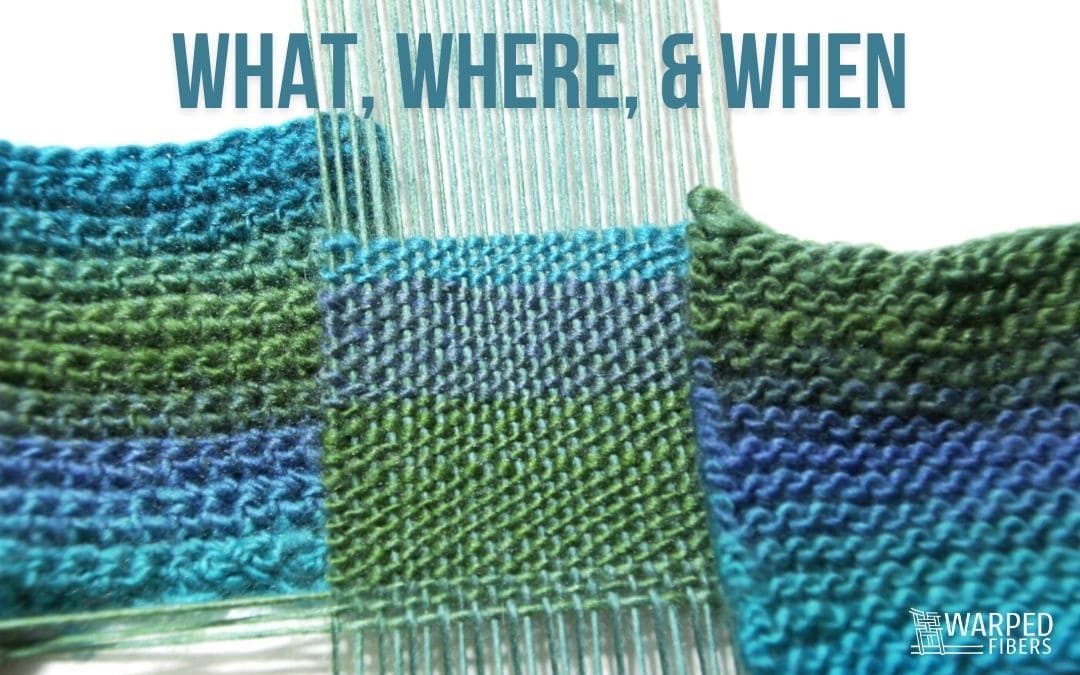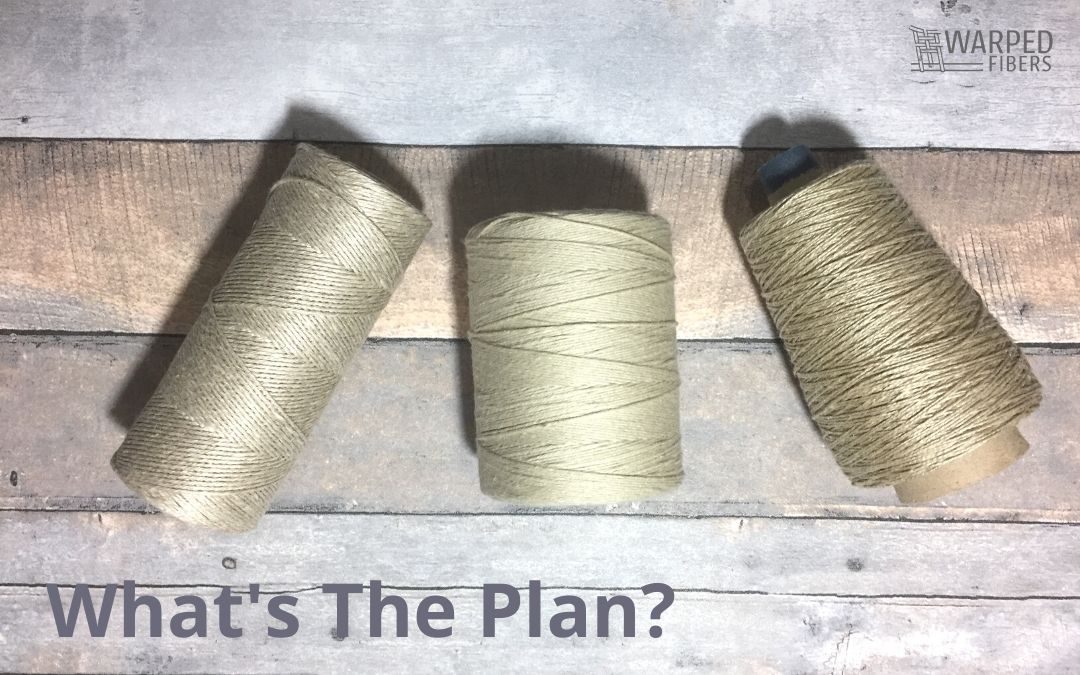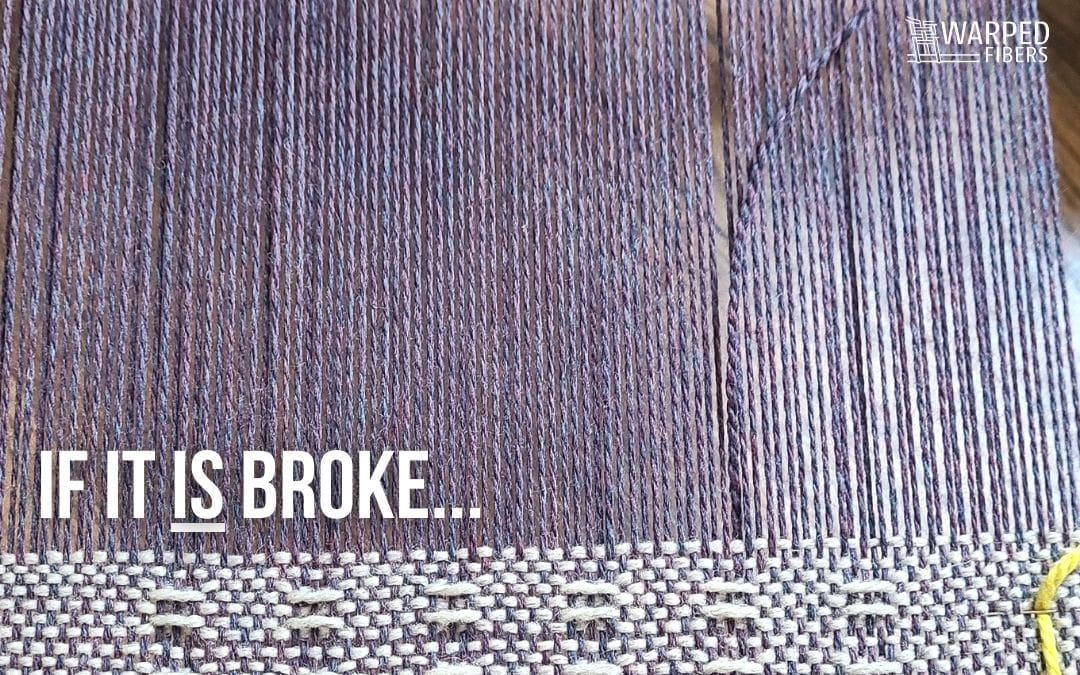Plain weave is a simple weaving technique that is full of depth and incredibly versatile. In fact, I have an entire post on patterns that you can make in plain weave just by changing up the colors of the warp and weft you are weaving with.
What if you are looking for something a little bit different, though, something that can be spontaneous?
That is where clasped weft comes in!
If you are new, or you just want a general reminder of your weaving terms, you can brush up here before continuing!
Jump To:
What is clasped weft?
Clasped weft is a weaving technique that is done in a plain, balanced weaving. The “pattern” that you create can be decided as you weave because you are not limited to the pattern created by combining certain colors of warp and weft.
Clasped weft has some similarities to a few different tapestry techniques, but is also very different!
For a quick refresher: tapestry is a weft-faced weaving with discontinuous weft. Clasped weaving, on the other hand, is a balanced weaving with discontinuous and double weft.
Learn more about tapestry here.
Learn about discontinuous weft here.
So let’s break down clasped weaving into it’s parts to get a better understanding of the technique as a whole.
First, balanced weaving. A balanced weaving is one where you see the same amount of warp as you do weft – the ratio of warp to weft is balanced or at least close to it.
Discontinuous weft is where your weft yarn does not continue across the entire pick of your weaving. Instead it stops somewhere between the selvedges, is met by a different weft, and then returns to the selvedge it started at. If you are weaving tapestry, then this weft returns to the selvedge in a different pick, but in clasped weft, it returns in the same pick. This is where the next part comes in.
Double weft. This means that you will have 2 picks of weft in the same shed instead of the usual 1. If you are weaving with just 2 weft colors (weft 1 and weft 2) then weft 1 and 2 will meet somewhere in the middle of your weaving, wrap around each other, and then return to the selvedges all without changing your shed. This will show up as having 2 picks of weft woven in the same shed.
Where you decide to have your wefts meet is entirely up to you and your pattern! This is where you really get to have fun with this technique.
How to do it
So I already mostly explained the how of clasped weft while I was explaining the what, but we can go a bit more in depth.
The most common way to create your clasped weft is to weave your first color (A) all the way across your weaving and out of your selvedge. Then twist your second weft color (B) around the first weft and pull the first weft back through the same shed.
By twisting the 2 wefts around each other, you are doing 2 different things. First, you are joining them together for the visual of the clasped weft. Second, you are ensuring that the first weft is not unweaving the first pick across the weaving since you never changed your shed.
As I said previously, where to place the join is completely up to you and I recommend playing around and having fun with it. You can either do it in a very regimented way to create stair step patterns, diamonds, etc. Or you can do it where you just go back and forth and stop wherever you feel like it! Both of these methods are completely valid and can create super interesting and fun designs. They also create entirely different designs. All with the same technique!
Gotta love the versatility!
If you are weaving more than 2 colors with your clasped weft, then things can change up a little bit.
Clasped Weft With 3 Colors
Weaving clasped weft with 2 colors can create a really fun and interesting design, but what if you want more?
Adding on a third color isn’t really more difficult as long as you start it out correctly.
The most important tip for weaving clasped weft with 3 colors is that the middle color will always be your lead color and you will need to pay attention to where the middle color started in your weaving.
When starting your 3 color clasped weft you will need to start the middle color (A) in the middle of the weaving. Then this color will travel the rest of the way across the shed to wrap around and pick up your second color (B) and then back across to pick up your third color (C). Then A will make its way back to where it started in the middle of the weaving. ALL of this happens within the same shed!
It is important for color A to go back to where it started to maintain the double weft as much as possible. If it goes too far then there will be an area of triple weft and if it doesn’t go far enough there will be an area of single weft. No matter what you do, there will be a small transition area where the double weft switches, but it should mostly blend in to the rest of the weaving.
Once you pick up both B and C with A then you can maneuver the weft to exactly where you want it before you beat it, just like 2 color clasped weft.
Tip: If you are having trouble starting and stopping your middle color A in the same spot each time, then use a knitting stitch marker or tie an extra piece of yarn around the warp you need to start and stop at to more easily identify it.
There are now 2 ways to take it – either purchase the whole course at once for a discount or “create your own” course by purchasing just the parts you want! Either way, get 10% off for being a member of the Warped Community!
What you can make
Clasped weft is a really great option for pretty much anything you want to create. It makes a stunning scarf, table runner, pillow, towel, etc. etc. Really anything you want to create could be fun with clasped weft.
When you are weaving with clasped weft, to really get the most out of your design, I highly recommend choosing colors deliberately because they will really change the outcome of your finishing weaving. Choosing colors that are very different will make a bolder pattern that stands out more. You could also choose one of your wefts to be similar to that of your warp to give off a purposefully unbalanced look.
Variegated yarns can also be a really fun inclusion because they change as you go with no extra thought required! This can usually lead to some really interesting and unexpected results.
As always, I recommend playing around with different ideas before planning a full project to fully get a feel for what this technique can do and how you want to use it.
⇣ Love It? Share It! ⇣
You May Also Like



















